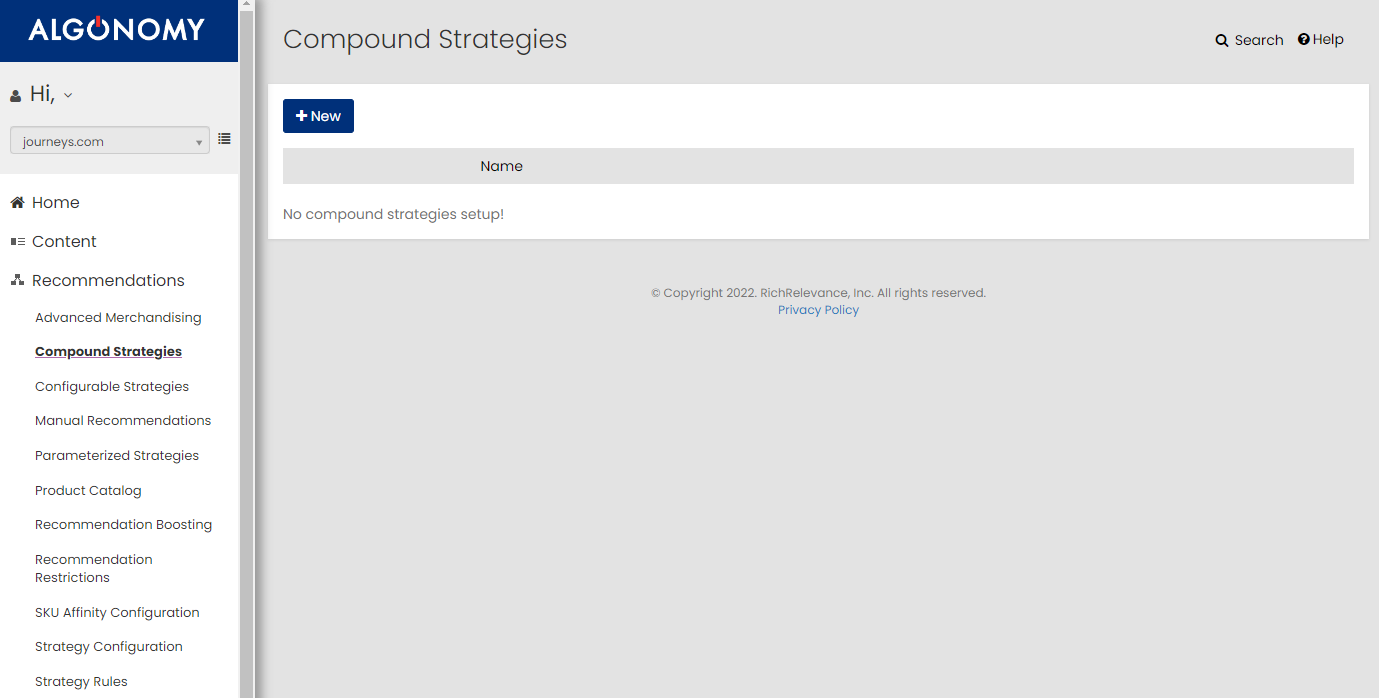Compound Strategies
Overview
The Compound Strategies feature allows you to combine the results of two or more strategies for populating recommendations in a single placement, and specify which recommendation slots these strategies will occupy. A "slot" is an ordered position within a placement for recommendations.
The newly created compound strategy is treated like any other strategy in the system. You can designate it as a Preferred Strategy for a placement, configure a strategy message or utilize it in a RichRule.
Example Use Case
The user can to perform the following actions:
-
Recommend both manually merchandised products and automated recommendations for a single placement.
-
Remedy circumstances in which high-relevant strategies have a very limited number of products to recommend. For example, create a strategy that uses PersonalizedClickP as a backfill for RecentHistoricalItems to eliminate whitespace in recommendations.
-
In collaboration with the Preferred Strategies, minimize the exposure of RichRecs+Email recipients to Top Seller strategies when the email objective is to recommend items based on the previous purchase.
-
Circumvent the interference matrix to allow strategies that use CategoryTopSellers and PopularProductsInCategory to display concurrently.
Creating a Strategy
Perform the following steps to create a compound strategy and base strategy:
- On the Omnichannel Personalization Dashboard page, go to Recommendations > Compound Strategies.
The Compound Strategies page is displayed.

- Click +New.
- Specify the name of the compound strategy (for example, 'Manual_Merch_and_Purchase_CP').
- Click Add.
The created compound strategy is displayed on the Compound Strategies page.
- Click view/edit on the corresponding compound strategy you just created.
- Click +New to start configuring the constituent base strategies.
The add base strategy window is displayed.

- In the Strategy to match: section, select the base strategy from the dropdown list.
- Set the minimum number of recs you want this base strategy to return. Entering "-1" represents that there is no minimum value.
- Set the maximum number of recs you want this base strategy to return. Entering "-1" represents that this strategy will return as many products it can.
- Click Add.
The created base strategy is displayed in the compound strategy.

- Repeat the steps from 6-10 to create as many base strategies you want.
-
Click the required checkbox to stipulate that the base strategy has to return the minimum number of recs for the compound strategy to be selected by the user.
-
Click the use strategy hints checkbox to stipulate that the strategy hints of this base strategy will be used as the hints for the compound strategy message.
The add compound strategy window is displayed.

Note: The strategy name must contain only the alphanumeric, '-' and '_' characters.
You can perform the following actions on the base strategies:
-
Click remove to delete the base strategy configuration from the compound strategy.
-
The position column indicates the position of the base strategy's returned recommendations in the compound strategy.
-
Click the disable boosting checkbox to disable the boosting recs. Ignore the disable boosting controls for the compound strategies.
Setup
The compound strategy must be enabled in the dashboard with a strategy message configured for the page type(s) where you want to display.
Tips and Hints
-
Combining multiple strategies can have the result of merging multiple distinct product sets (for example, clothes with consumer electronics). As such, it may be helpful to test a newly created compound strategy in the integration or staging environments prior to publishing it to production, so that you can better understand the ensuing user experience. This is particularly important for RichRecs+Email.
-
In combination with the preferred strategies feature, compound strategies can be useful for more consistently aligning recommendations with merchant objectives in RichRecs+Emails. Since a compound strategy is more likely to qualify given its multiple inputs, configuring it as a preferred strategy in the email placement will reduce the risk of fallback strategies being utilized.
-
If multiple base strategies are set as required, ensure that they have realistic minimums. For example, if a placement only has five slots, configuring a rec minimum of three for each base strategy will cause the compound strategy not to qualify.